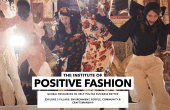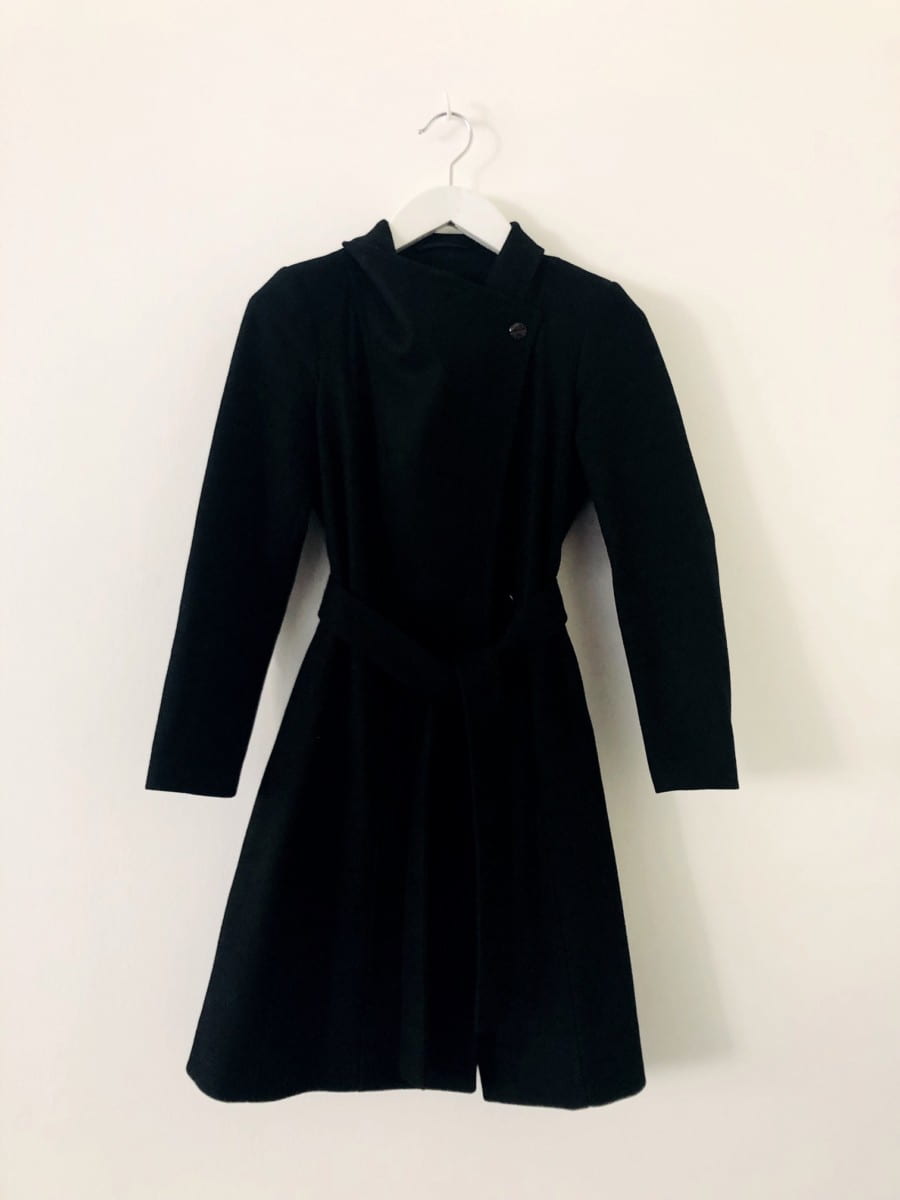Ahead of Yohji Yamamoto’s show in Paris tonight, which I am very much looking forward to, I thought I would share a piece I wrote a little while ago for the epilogue to ‘Yamamoto & Yohji’ published by Rizzoli in 2014, called Questioning Fashion.

It is easy to underestimate just how far fashion has come over the last century. Just over 100 years ago the French designer Paul Poiret, who played a vital part in developing fashion magazines, first introduced the idea of the fashion show and fashion scent which is now integrated into our global 21st century lives in a way he could never have imagined. Fashion has become ubiquitous, underpinning many of the worldwide economic, social and cultural infrastructures. Poiret – who died in poverty after falling out of fashion – could never have envisaged the sheer influence of the industry or that its omnipresence would call into question the very nature of fashion itself. We now have over 200 fashion weeks across the globe; an ever expanding fast and luxury fashion retail sector; increasing integration of technology into the marketing and selling of fashion goods particularly on-line; a fashion media, which includes bloggers, fashion tv and shopping channels, promoting all aspects of the industry; and the ever deepening relationship between fashion and celebrity – just look at the column inches created by the red carpet making it hard to tell where one stops and the other begins. Within this fashion maelstrom the question is increasingly being asked: just what is fashion?
These days fashion means business. That is easy to see in the fast fashion retail outlets in any global high street- selling us an idea about fashion that in realty is little more than clothes with a better understanding of design. Most of these are poorly constructed and made of inferior fabrics: they undermine the world’s resources, exploit the garment maker and leave the consumer ultimately dissatisfied as they neither last nor really work with their body. As Yohji says- it is better to wear jeans and a t-shirt when you are young and have youth on your side rather than buy into an idea of fashion that is false. ‘Don’t be too much fashion,’ he warns. ‘The brand advertising is making you crazy, You don’t need to be sexy. You are sexy enough.’ Don’t buy the advertisers’ message.
Yet we have more to fear from so-called high-end fashion than the fast fashion sector as an insidious dash for cash takes place. No longer does an established fashion brand or house close with the departure of the original designer: all the great French fashion houses as well as some of the newer design houses such as Jil Sander or Alexander McQueen have had the industry on the edge of its seats waiting to hear who will be picked to take it over and carry the DNA from the original designer into new collections. This is not about the creative impact that might be lost without the designer’s ethos being replaced; rather it is the need to keep supporting the superstructure that has been created. The design teams, the buyers and merchandisers, the retail outlets, the online sales teams, the beauty products, the advertisers, the PR firms: the complete edifice which has been constructed to sell the clothes and luxury products. In the 21st century these have become crucial businesses that once established, like banks, cannot be allowed to fail.
Yet the skills, abilities and talents needed to operate in this fashion business world have also shifted. I would argue that fashion designers are no longer needed, instead creative directors are the must have. We have moved on from Poiret’s time, now the responsibility and spread of creative vision needed to deliver the bottom line is so complex, to create year in year out profits- most of which come from lipstick, perfume and bag sales- it requires a different type of creativity; one not necessarily normally associated with a traditional understanding of fashion design. Indeed you can see how creatively and dynamically Yohj has responded to being able to simply focus on the creative aspect of his company as since 2009 the business aspect is taken care of by Japan’s Integral Corp and he is the designer.
I am not arguing for some sort of golden age of fashion where the vision of a fashion designer was restricted to a few, but if everything is about fashion how can it not be diluted? How do we ensure that the fire which generates original thinking and novel ways of seeing fashion does not become a fashion ember? I am totally supportive of the idea that fashion is a truly creative, economic force, but I am concerned that as an industry it is aware that it needs to protect the creative force that makes it a dynamic means of expression. It needs a commercial impetus which helps to drive economic and cultural expression, but not at the expense of the environment or the people that create this great industry whether that be the seamstress, shop floor worker or unpaid fashion media intern. It also cannot be at the expense of fashion in its purest form. Or it carries within it the seeds of its own destruction. Yohji talks about the lack of space given to young Japanese designers – those who will carry the fire through to the future. They have no power, find it difficult to even get paid and so become selling machines more than creative artists.
In the midst of this business that is fashion, the true conception of fashion is about experimentation and saying something new with garments; this must not be lost. It requires designers whose thinking is not limited by the pressure to meet the demands of the fashion cycle, they are now more valuable than ever. Like Charles James (who died in 1978) or Azzedine Alaia, who like Yohji is still working today, we need designers who are not restricted by the seasonal cycle of fashion with its imperative to produce collections several times a year. More than ever, we need those artists whose motivation is the possibility of creating something iconoclastic; who are not seduced by the surface of fashion and the gloss it can give. We need those with an approach to fashion who not only explore but challenge the convention that fabric, silhouette, structure and the relationship of clothes to the body might suggest. Whilst Yohji does work to the international fashion cycle of six collections a year, his motivation is to constantly challenge rather than create what the fashion industry might expect. This is motivated by his belief that perfection is ugly; it is scars, failure and disorder which act as the grit in the oyster, by helping to drive creativity and originality. The result is freedom from convention and timeless fashion. As he describes it “With my eyes turned towards the past, I walk backwards into the future”.
This understanding of the traditions and heritage, the construction of garments – Yohji will always describe himself as a dressmaker and he is often described as a master taylor – these all feed his ability to deconstruct and recreate a new approach to clothing. Like the musician or dancer who forever practices their scales or steps, a true understanding of the architecture of clothes enables designers such as Yohji or Alaia to create costumes that are in opposition to the fashion industry. This about the garments, not their fashion-ability. It’s about maintaining a freshness and inventiveness of approach – precious qualities when fashion is everywhere. This is also contrary to the view that anyone can design apparel and develop a brand; from the celebrity who decides to capitalize on their followers by developing their own fashion line to the pro-consumers who use our digital age to create their own garments or merchandise. While one or two may be able to make that leap and be really directional producing clothes that make us think differently about our bodies and what we wear, the truth is these are the artist- fashion- thinkers and they are few and far between.
In questioning what fashion is today there needs to be room for a designer to manoeuvre. We need artist- philosopher- designers who use the medium of clothes to say something more fundamental about ourselves and our humanity. I wish that more of today’s designers were able to say like Yohji: “I don’t care…Maybe two or three percent of the audience could understand what I am meaning…more than 85 to 88 percent of people don’t understand, but I don’t care.” He often talks about how fashion can make you happy but that it also needs to question society. At a time when so much of fashion has become about styling, about the surface of the industry and the image of fashion, we need designers who are not afraid to challenge the industry and who understand how fashion can be a crucial part of the fabric of our lives.
Find out more about the book here.




